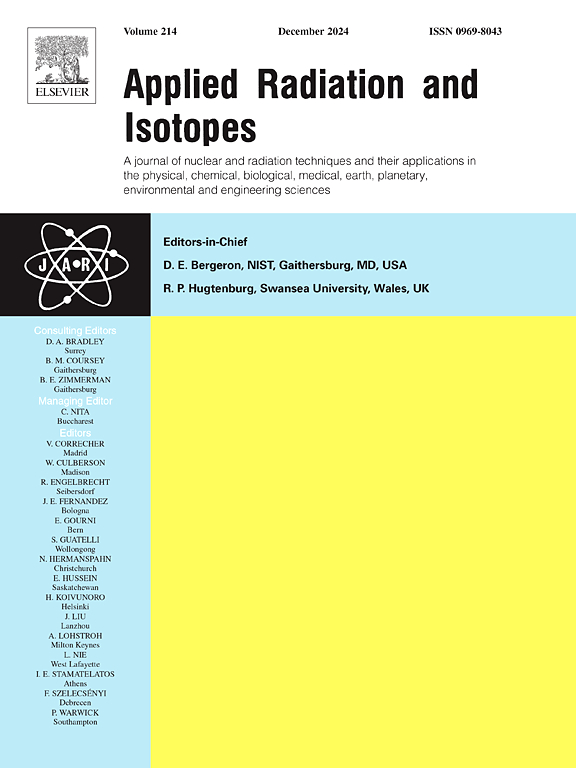Evaluation of radiation exposure and toxicity risks of uranium in drinking water of Bharatpur District, Rajasthan, India
IF 1.6
3区 工程技术
Q3 CHEMISTRY, INORGANIC & NUCLEAR
引用次数: 0
Abstract
A study was conducted using an LED fluorimeter to estimate natural uranium concentrations in 205 drinking water samples from the Bharatpur district, Rajasthan. The uranium content ranged from 0.52 to 193.5 μg/L, with a mean of 19.9 μg/L. Approximately 18.0% of the samples surpassed the prescribed limit of 30 μg/L set by the World Health Organization. Annual effective doses were calculated for various life stages, revealing that infants faced the highest exposure. The mean excess cancer risk was below the prescribed value (1.67×10-4) set by the Atomic Energy Regulatory Board, India. The mean daily uranium intake ranged from 0.01 to 5.53 μg/kg/day. The hazard quotient in 15.1% of samples indicated potential chemical toxicity risks. Total dissolved solids showed a positive correlation with uranium levels.
印度拉贾斯坦邦巴拉特普尔地区饮用水中铀的辐射暴露和毒性风险评价
利用LED荧光计进行了一项研究,以估计拉贾斯坦邦巴拉特普尔地区205个饮用水样本中的天然铀浓度。铀含量为0.52 ~ 193.5 μg/L,平均值为19.9 μg/L。约有18.0%的样品超过了世界卫生组织规定的30 μg/L。计算了不同生命阶段的年有效剂量,发现婴儿面临最高的暴露。平均过量癌症风险低于印度原子能管理委员会规定的值(1.67×10-4)。日平均铀摄入量为0.01 ~ 5.53 μg/kg/d。15.1%的样品存在潜在的化学毒性风险。溶解固体总量与铀含量呈正相关。
本文章由计算机程序翻译,如有差异,请以英文原文为准。
求助全文
约1分钟内获得全文
求助全文
来源期刊

Applied Radiation and Isotopes
工程技术-核科学技术
CiteScore
3.00
自引率
12.50%
发文量
406
审稿时长
13.5 months
期刊介绍:
Applied Radiation and Isotopes provides a high quality medium for the publication of substantial, original and scientific and technological papers on the development and peaceful application of nuclear, radiation and radionuclide techniques in chemistry, physics, biochemistry, biology, medicine, security, engineering and in the earth, planetary and environmental sciences, all including dosimetry. Nuclear techniques are defined in the broadest sense and both experimental and theoretical papers are welcome. They include the development and use of α- and β-particles, X-rays and γ-rays, neutrons and other nuclear particles and radiations from all sources, including radionuclides, synchrotron sources, cyclotrons and reactors and from the natural environment.
The journal aims to publish papers with significance to an international audience, containing substantial novelty and scientific impact. The Editors reserve the rights to reject, with or without external review, papers that do not meet these criteria.
Papers dealing with radiation processing, i.e., where radiation is used to bring about a biological, chemical or physical change in a material, should be directed to our sister journal Radiation Physics and Chemistry.
 求助内容:
求助内容: 应助结果提醒方式:
应助结果提醒方式:


